The Independent's journalism is supported by our readers. When you purchase through links on our site, we may earn commission.
Bloodstock Festival and the Art of Metal
Over 16 years, Bloodstock has grown exponentially, becoming one of the UK’s most renowned, best-loved metal festivals. Co-founder and respected artist in his own right Paul R Gregory discusses the festival’s foundations and how he’s bringing art to the metal masses
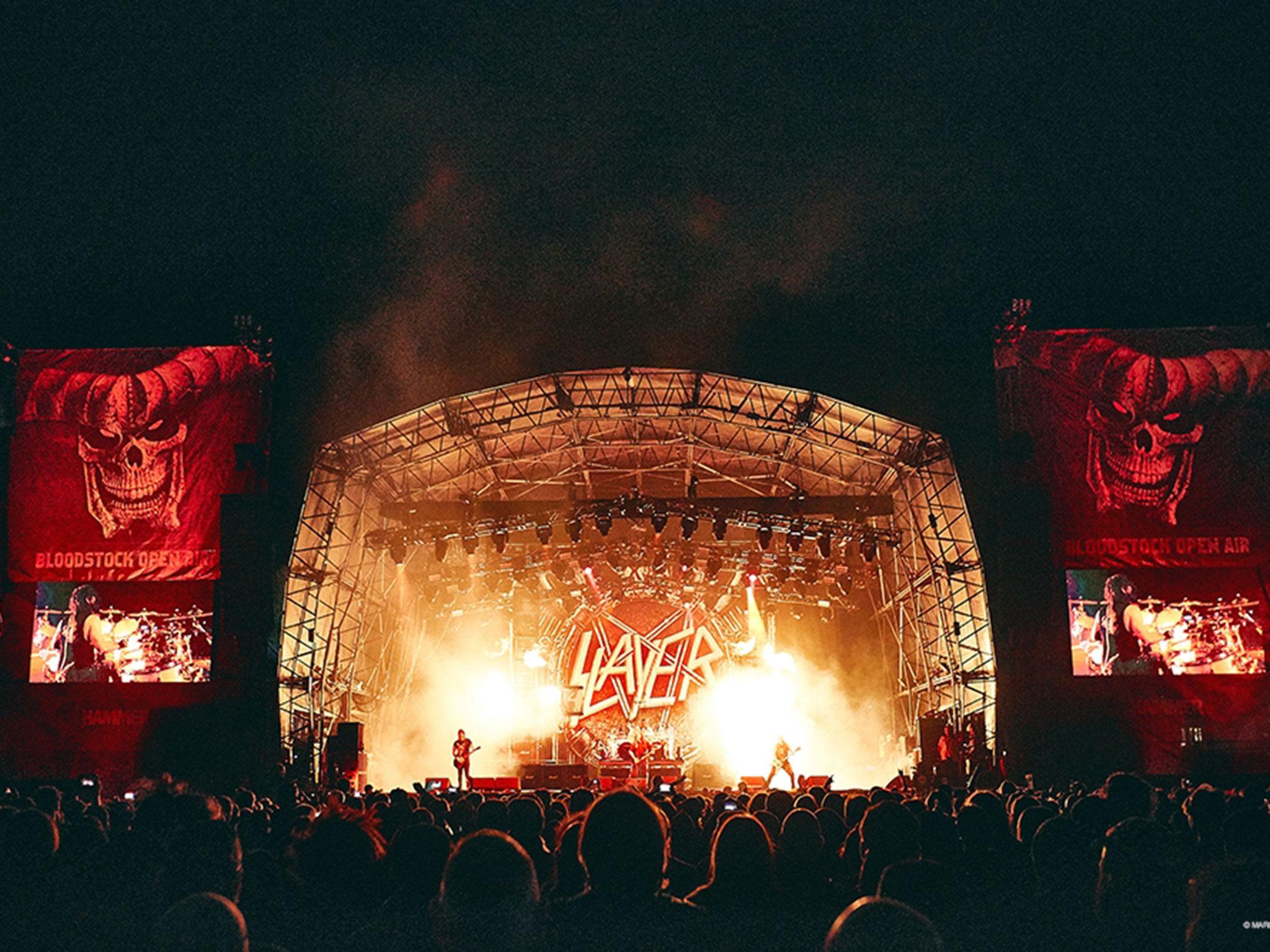
Our association between artwork and music is inextricably linked; if an iconic album is brought up in conversation, whether it be Dark Side of the Moon, Sgt Pepper’s Lonely Hearts Club Band or Appetite for Destruction, it is invariably the album’s artwork that our mind’s eye latches on to before we begin to recall any of the music itself. Metal’s relationship with art is particularly symbiotic; both are often loud compositions that hide intricate details which are only revealed upon closer inspection.
Over the years, metal’s album sleeves have been brought to life through mascots, an integral part of some of the genres biggest bands, bringing a fantastical larger-than-life edge to not only the artwork but also the live shows too. Megadeth have the skeletal figure of Vic Rattlehead, Motörhead had the snarling be-fanged Snaggletooth and Iron Maiden have perhaps the most famous example of them all, Eddie the ’ead, who has appeared in various guises over the band’s 42-year career including a cyborg, an Egyptian mummy and a lobotomised asylum patient. The iconography provides an instantly discernable symbol that fans can take to their collective blackened bosom (and several ludicrous opportunities for merchandising). No artwork better represents the genre it is associated with than that displayed on metal’s most iconic covers.
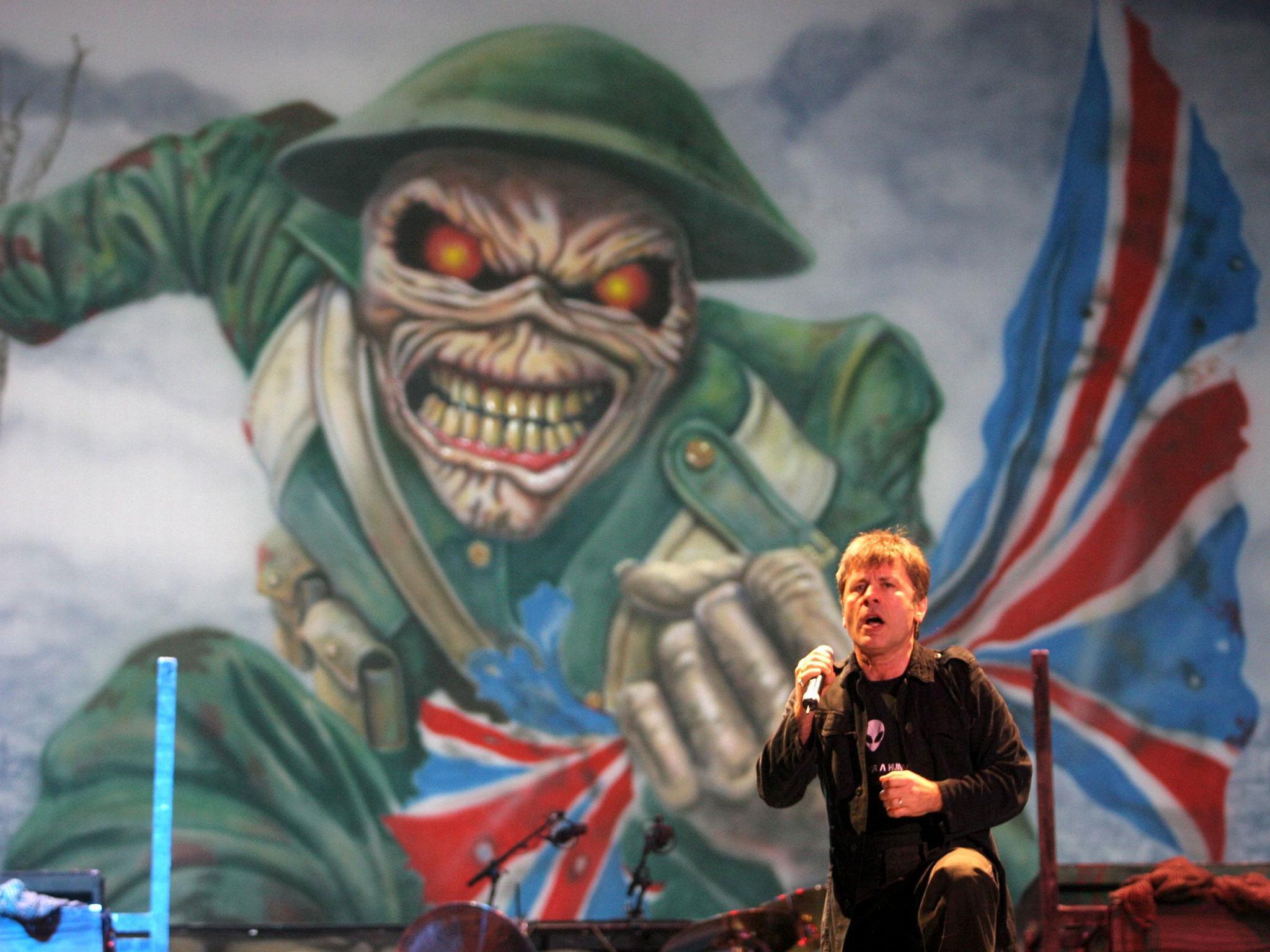
Someone who is acutely aware of the synergy between art and metal is Derby-based artist Paul R Gregory. Largely known for painting enormous murals of atmospheric landscapes that show a recognition of nature’s power and grandeur, he’s also the co-founder of Bloodstock, one of the UK’s most prestigious and longest-running metal festivals. Since 2014, Gregory has combined these two passions by curating an art gallery on the Bloodstock site. The RAM Gallery (named after the local folklore of the Derby Ram, which also inspires the festival’s own mascot) showcases a wide array of photography and artwork that is inextricably linked to metal’s rich history. “I wanted to bring the link between fantasy and music into sharp focus and see how it had developed over the years,” says Gregory of the gallery. “I like the idea of having the history of the festival there; all the paintings I’ve done for Bloodstock each year are there and we’ll have the bands come in and sign them. There’s not another festival that I can think of that displays its history through original artwork in quite the same way that we do.”
Gregory was encouraged as a young lad to pursue his artistic sensibilities by his art teacher, who spotted a less conventional thread in his work than that of his peers. He was inspired by a long list of artists and began to nurture a style that amalgamated the landscapes of Turner, the fantasy of Frank Frazetta and the detail of local Derby artist Joseph Wright. In the late 1970s, Gregory purchased two dilapidated 200-year-old cottages in the Derbyshire village of Spondon (where he still lives) which the local authorities were due to demolish. Gregory convinced them otherwise and turned them into Chapel Cottage Galleries, where he curated many exhibitions by local and international artists. Curiously, he never used the space to showcase his own work but owning the gallery fired his imagination, galvanising him into creating vast murals inspired by the works of Tolkien and his rich fantasy world Middle Earth. “It was owning the gallery that made me decide I really wanted to make a go of being an artist as a career choice,” he says. “I’m a big fan of Tolkien’s books and I could see things in them that I wanted to interpret. At the time, there was no other way to ‘see’ his work except to visualise it in your imagination.”
From an early age, Gregory had also been a big aficionado of music, fortuitously entering his teens just as the Sixties was beginning to get into full swing. Whilst metal was almost a full decade away from educating the masses to the fact that the devil has all the best tunes, the young Paul Gregory was privileged enough to see the influence that the blues was having on popular music of the time, regularly dropping the needle on Rolling Stones records. His introduction to metal, which effectively took the blueprint laid down by the blues and layered it with a macabre distorted asperity, came via his artwork. “I was introduced to metal when I was commissioned to do my first album cover for Saxon (for their 1984 sixth studio album Crusader). Their management saw one of my Tolkien paintings, got in contact with me and that’s how the whole journey started. I’ve done 17 albums for the band over the years, I just love the music.”
The Saxon album opened up a new side to Gregory’s artwork as a whole slew of metal bands, inspired by his fantastical landscapes, appointed him to design their album sleeves including Blind Guardian, Uriah Heep, Molly Hatchet and Dio. “Heavy Metal has got its own voice, it’s really powerful stuff and there are so many sub-genres and different styles within it, some of which are quite weird actually, but that appeals to me,” he says with a wry chuckle. “If you look at the amount of bands that are also influenced by Tolkien’s work it’s quite staggering. In fact, we’ve got a Bloodstock headliner this year, Amon Amarth, whose name is taken from a Sindarin word for Mount Doom. I wasn’t really aware of Tolkien’s impact on metal until I started working with these bands.’
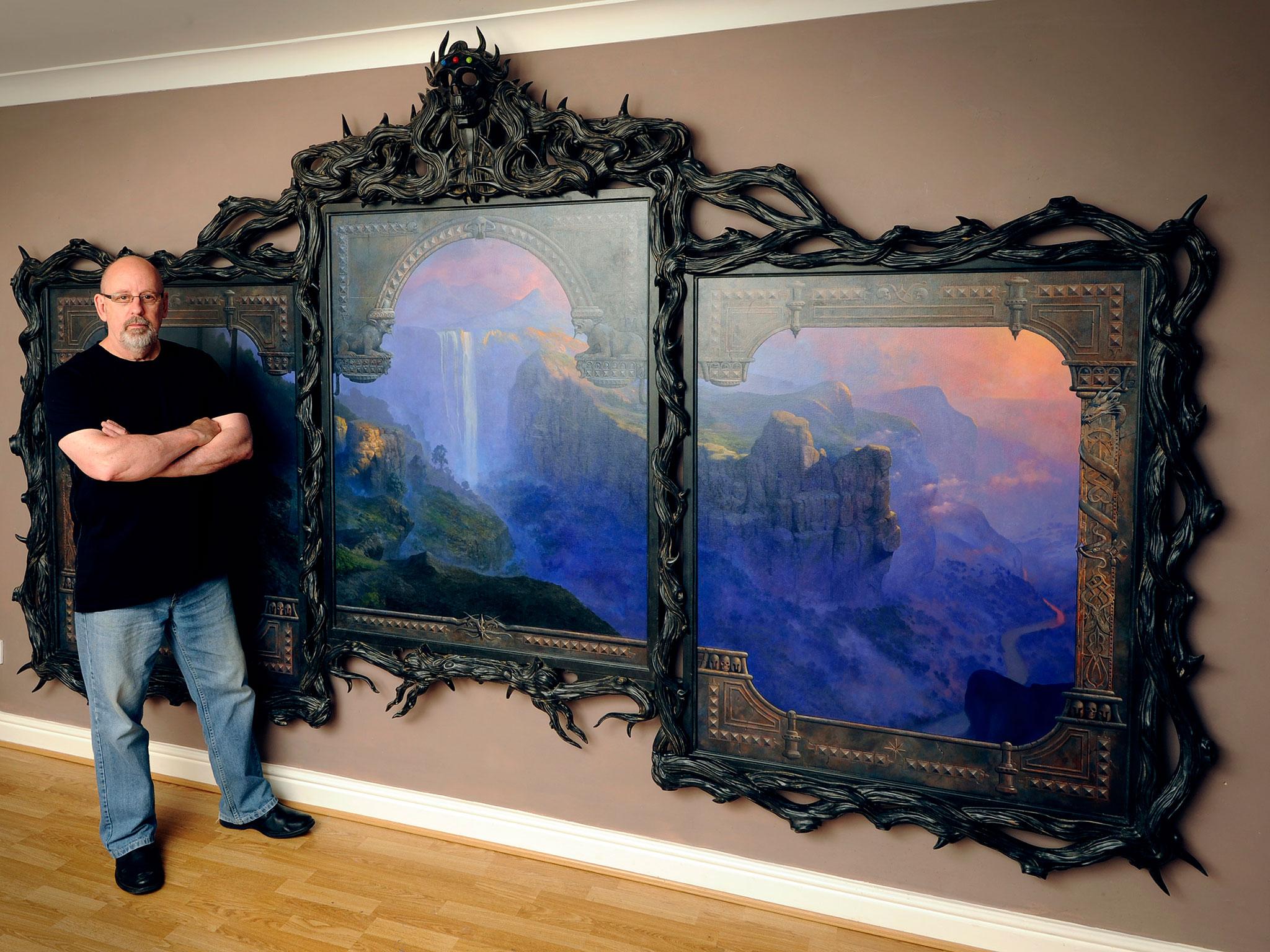
The foundations of Bloodstock Festival itself lie in the meeting of two individuals from totally different backgrounds who forged a friendship through their love of heavy metal. Gregory was looking for someone to help him build a website and was introduced to Vince Brotheridge through a mutual friend. The pair bonded straight away, with Brotheridge informing Gregory of his desire to build a festival that embodied the spirit of Donnington’s Monsters of Rock, which had been defunct in the UK since 1996. “I immediately said we should go for it,” Gregory recalls of that fateful meeting. “The idea just appealed to me but that’s how I am. I don’t consider the problems, I always consider the potential and that’s how the whole thing started. Myself and Vince were very passionate about the idea but it was quite a reality check when we actually got into the mechanics of it, especially considering we didn’t have any prior knowledge of putting a festival together at all. It’s been a really steep learning curve over the years, I have to say, but I wouldn’t change it for a moment.”
Bizarrely, despite metal’s phenomenal popularity at the dawn of the 21st century (admittedly largely down to the fairly Bloodstock unfriendly subgenre of nu metal) there weren’t any annual festivals that were serving its loyal and dedicated fans. Download was a full two years away from its inaugural showing, Ozzfest was sporadic in the UK with events in 1998, 2001 and 2002 before being swallowed up as an occasional curated day at Download and the Reading and Leeds Festivals, whilst far more mosh-friendly than the insipid rite of passage it is today, could still hardly be labelled as a metal festival overall. Gregory and Brotheridge had unwittingly captured a niche but passionate audience.
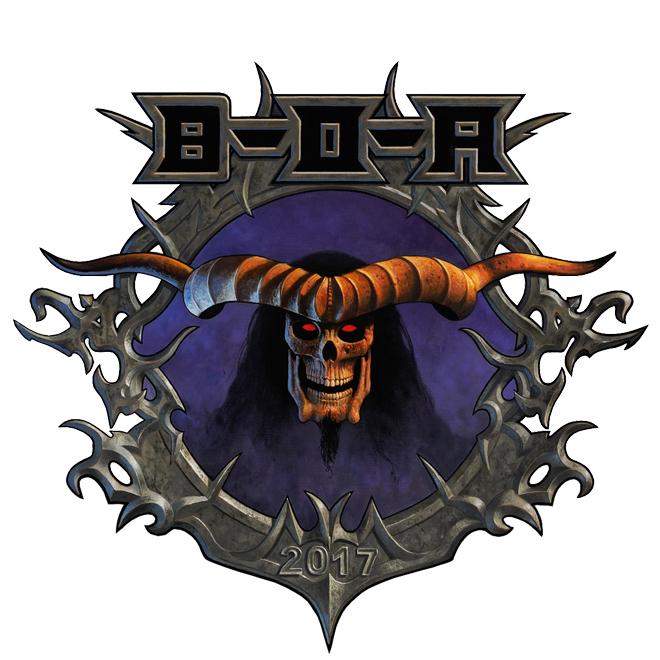
Bloodstock began as an indoor event held at the Derby Assembly Rooms in 2001. Attendance was a modest 700 patrons, a respectable amount for an unestablished festival, but paltry in comparison to the 15,000 people who now attend the event annually. Brotheridge’s initial idea was to have Cradle of Filth headline the inaugural event, but the pope-bothering extreme gothic metallers were unable to attend. Fate intervened and Gregory appealed to his old buddies Saxon to take the slot, alongside a bill that included Glenn Hughes, Orange Goblin and Primal Fear.
Enjoy unlimited access to 100 million ad-free songs and podcasts with Amazon Music
Sign up now for a 30-day free trial. Terms apply.
ADVERTISEMENT. If you sign up to this service we will earn commission. This revenue helps to fund journalism across The Independent.
Enjoy unlimited access to 100 million ad-free songs and podcasts with Amazon Music
Sign up now for a 30-day free trial. Terms apply.
ADVERTISEMENT. If you sign up to this service we will earn commission. This revenue helps to fund journalism across The Independent.
From humble beginnings, the festival grew quickly and by 2005, the decision was made to expand and make Bloodstock an outdoor event. “We’d grown to a point where we simply didn’t have enough room, so we had to go outdoors,” Gregory says. “I think at the time people thought that was a big step, but you have to have growth in anything you do.”
It was an ambitious undertaking, especially considering that Bloodstock ran separate outdoor and indoor events in 2005 and 2006. “That turned out to be a mistake,” Gregory concedes. “We had a period where it was quite difficult financially to carry on and of course when you become an open air event, it’s a totally different kettle of fish. You have to build the infrastructure and the cost of that is considerably more than an indoor event. It was a new learning curve and it became very expensive very quickly; I took on the debt so things were touch and go for a few years after that but it gradually started to get better and develop. I don’t believe you can make something like a festival a success unless you have a passion for it. Some people go into it with the idea of making money and I’m sure that’s possible but you’re reliant on bringing in big headlining bands and we don’t want to be in a situation where we have to rely on that. It’s not about that for me, it’s about the music, the metal and people coming together as part of a scene.”
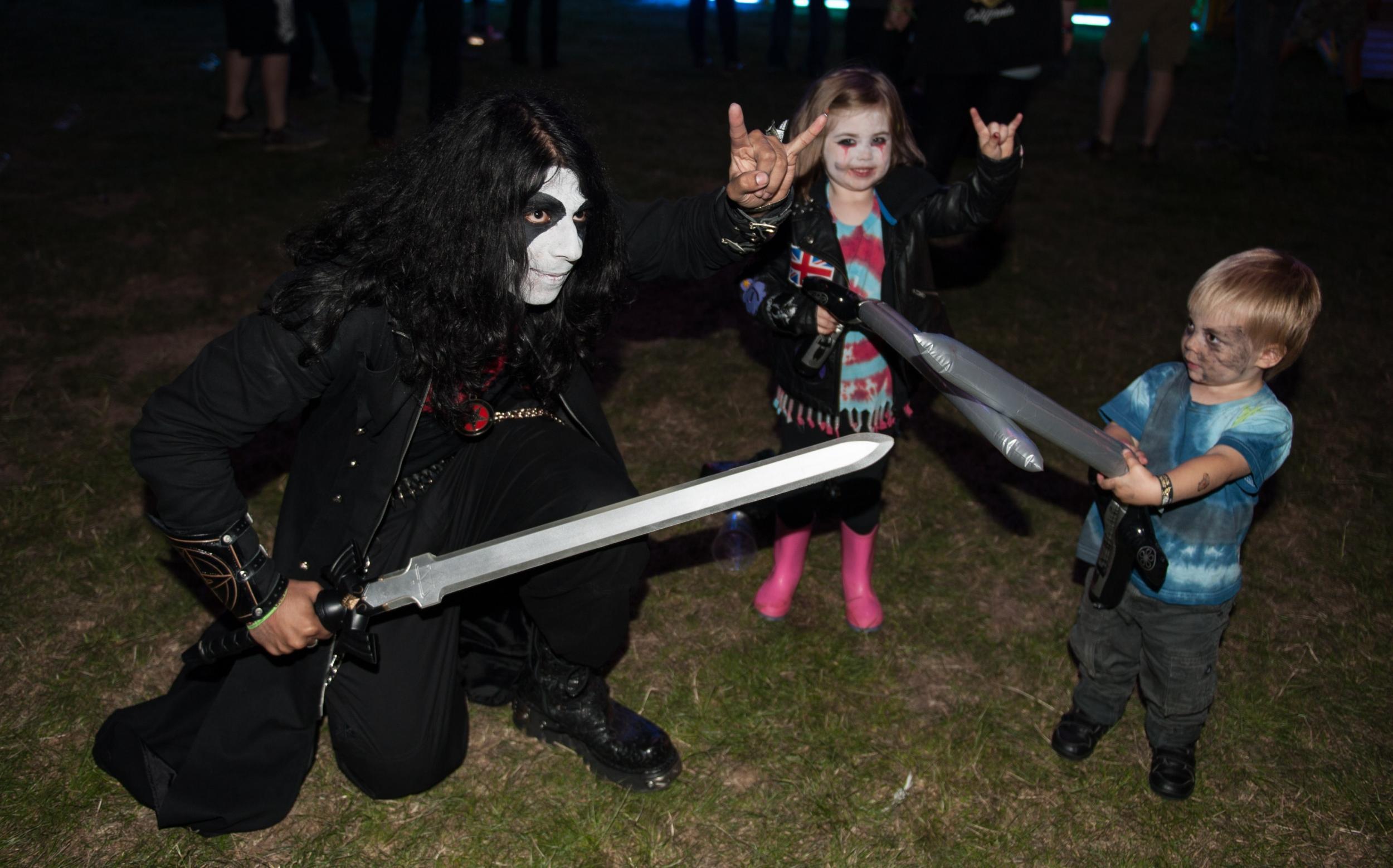
The adage often bandied around about Bloodstock is how it’s a family festival; it has all the trappings of a heavy metal village fete which just so happens to be soundtracked by fun family friendly frippery such as Decapitated, Hatebreed and Venom Prison. Whilst talk of “atmosphere” and “vibe” in relation to festivals is often greeted with a sardonic rolling of the eyes, (as, frankly, it should be) it is for good reason that Bloodstock is regularly regarded as one of the friendliest festivals in the country. “I don’t think that’s something that can be forced,” says Gregory. “It’s something that has to be earned over a period of time. You can’t simply invent a festival which has the same feeling that Bloodstock has, that’s something that has to be developed over time. Having the same fans come back year in, year out has meant we’ve built up a relationship with our fans; we know what they want because we are them and they are us.”
As Bloodstock has continued to grow, Gregory is gradually taking a step back from the overall running of the festival, handing it over to his daughters and son to truly keep the operation within the family. With weekend tickets sold out to this year’s edition and a headlining triumvirate of Amon Amarth, Ghost and Megadeth, it is undoubtedly a huge part of the legacy that he has created. “They say it takes 20 years to become an overnight success,” Gregory laughs. “We’re so passionate about it, I love the fans, the festival and everything about it, we have so many passionate metal fans that work to put Bloodstock on. It’s not a job to me, it’s something I enjoy and I wouldn’t change it for the world.”
Bloodstock Open Air 2017 takes place at Catton Hall from 10-13 August. Weekend tickets are sold out but day tickets are still available. For more information on Gregory’s artwork, head to Studio 54
Join our commenting forum
Join thought-provoking conversations, follow other Independent readers and see their replies
Comments